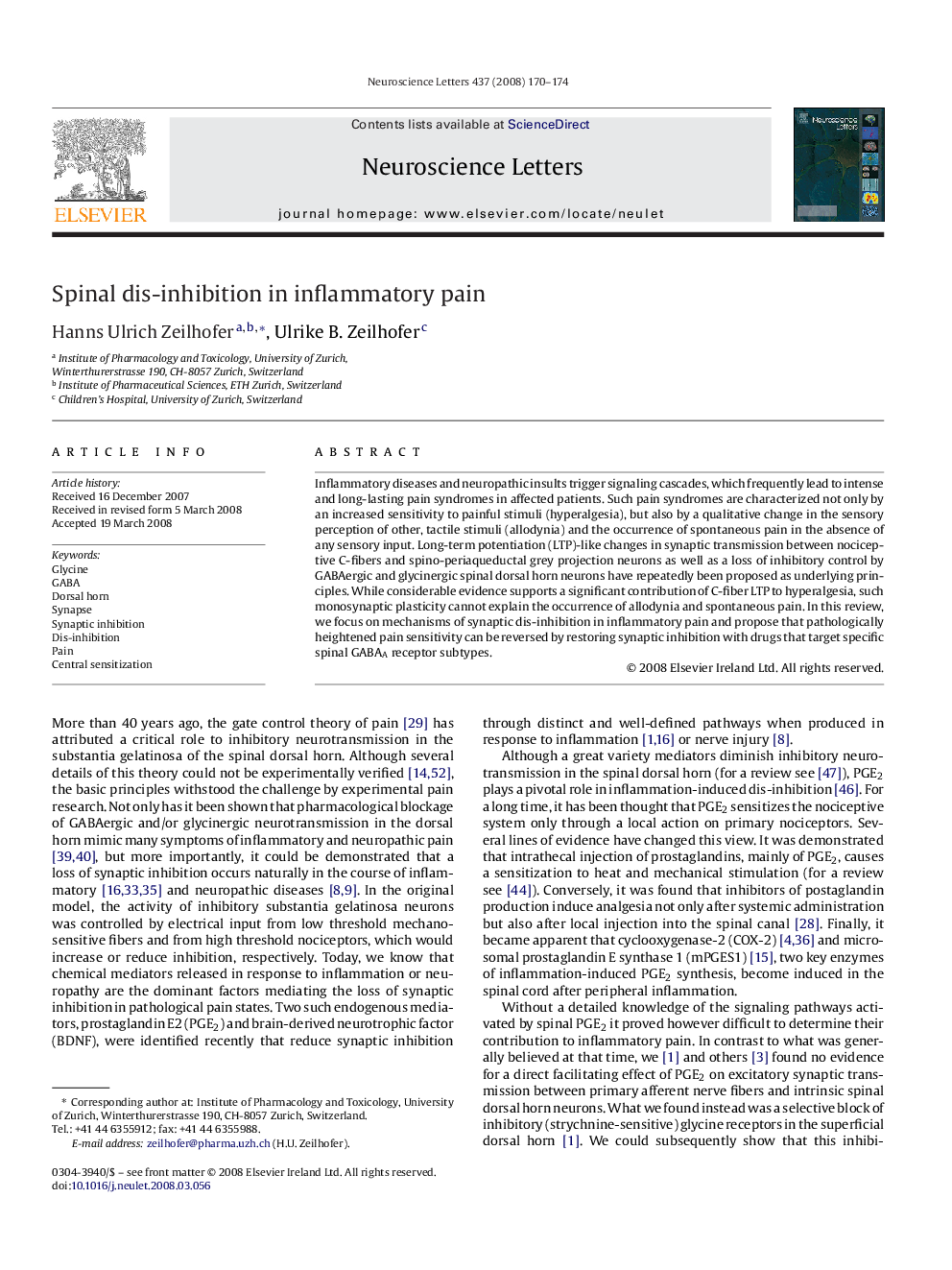| Article ID | Journal | Published Year | Pages | File Type |
|---|---|---|---|---|
| 4348609 | Neuroscience Letters | 2008 | 5 Pages |
Inflammatory diseases and neuropathic insults trigger signaling cascades, which frequently lead to intense and long-lasting pain syndromes in affected patients. Such pain syndromes are characterized not only by an increased sensitivity to painful stimuli (hyperalgesia), but also by a qualitative change in the sensory perception of other, tactile stimuli (allodynia) and the occurrence of spontaneous pain in the absence of any sensory input. Long-term potentiation (LTP)-like changes in synaptic transmission between nociceptive C-fibers and spino-periaqueductal grey projection neurons as well as a loss of inhibitory control by GABAergic and glycinergic spinal dorsal horn neurons have repeatedly been proposed as underlying principles. While considerable evidence supports a significant contribution of C-fiber LTP to hyperalgesia, such monosynaptic plasticity cannot explain the occurrence of allodynia and spontaneous pain. In this review, we focus on mechanisms of synaptic dis-inhibition in inflammatory pain and propose that pathologically heightened pain sensitivity can be reversed by restoring synaptic inhibition with drugs that target specific spinal GABAA receptor subtypes.
